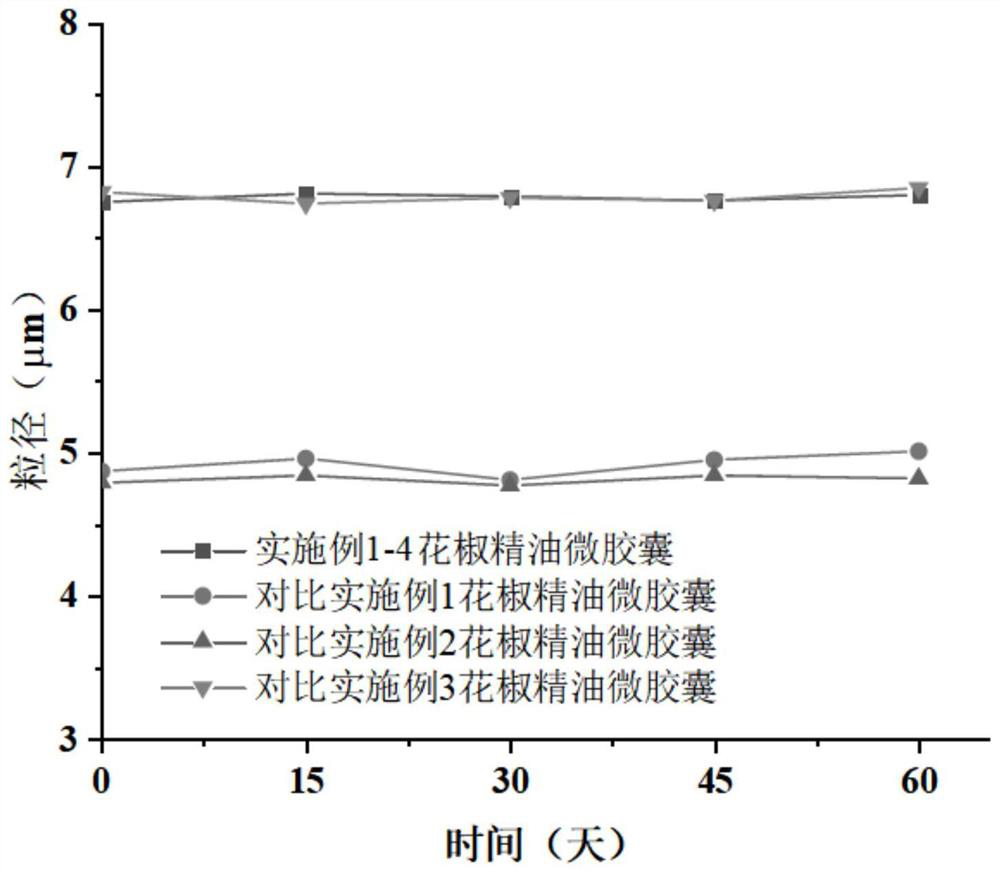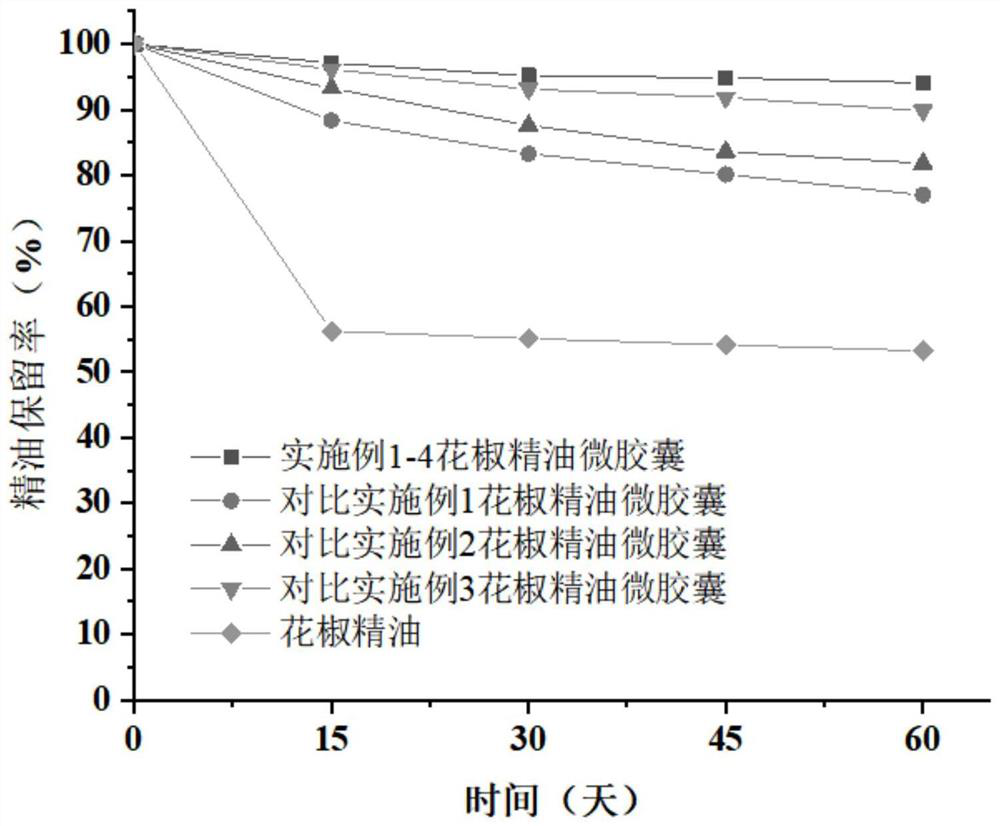Preparation method of high-embedding-rate microcapsule for powdering spice essential oil
A spice essential oil and microcapsule technology, which is applied in the field of food processing, can solve the problems of loss of volatile components, high time and energy consumption, and increased production costs, so as to reduce the loss of ingredients and flavor, enhance stability, and avoid agglomeration Effect
- Summary
- Abstract
- Description
- Claims
- Application Information
AI Technical Summary
Problems solved by technology
Method used
Image
Examples
Embodiment 1
[0051] Example 1: Preparation of spice essential oil microcapsules containing different quinoa protein-xanthan gum concentration ratios
[0052] The preparation method of spice essential oil microcapsules containing different quinoa protein-xanthan gum concentration ratios, the steps are as follows:
[0053] (1) prepare quinoa protein-xanthan gum mixed solution to obtain protein-polysaccharide mixed solution;
[0054] (2) preparing quinoa protein-xanthan gum covalent graft;
[0055] (3) preparation of quinoa protein-xanthan gum covalent graft-stabilized spice essential oil nanoemulsion;
[0056] (4) adjusting the pH of the nanoemulsion with acetic acid to prepare negatively charged complex coagulation microcapsules, and stirring in an ice bath to promote the complex coagulation reaction;
[0057] (5) adding chitosan oligosaccharide solution to the microcapsule suspension obtained in step (4), and carrying out secondary electrostatic coating to the microcapsules;
[0058] (6...
Embodiment 2
[0069] Example 2: Preparation of spice essential oil microcapsules using quinoa protein-xanthan gum covalent grafts prepared under different conditions as wall materials
[0070] Compared with Example 1, in this example, the concentration ratio of quinoa protein and xanthan gum in step (1) was fixed to 2:1, and the different quinoa protein-xanthan gum covalent linkages in step (2) were compared. Effects of branch preparation conditions on the quality of microcapsules.
[0071] Table 2 Effects of different covalent graft preparation conditions on the quality of microcapsules
[0072]
[0073]
[0074] It can be seen from Table 2 that the quinoa protein-xanthan gum covalent grafts prepared under different conditions can successfully embed various spice essential oils, and the obtained microcapsules have high encapsulation rate and loading rate. Moreover, the different preparation conditions of the covalent grafts did not significantly change the particle size of the obtai...
Embodiment 3
[0075] Example 3: Preparation of spice essential oil microcapsules containing different core-to-wall ratios
[0076]Compared with Example 1, in this example, the concentration ratio of quinoa protein and xanthan gum in step (1) was fixed at 2:1 (complex coagulation pH=3.0), and the spice essential oil (core material) in step (3) was compared. ) and the ratio of quinoa protein-xanthan gum covalent graft (wall material) content (1:2~2:1) on the quality of microcapsules.
[0077] Table 3 Influence of core-wall ratio on the quality of microcapsules
[0078]
[0079] The results showed that the quality trends of the four kinds of spice essential oil microcapsules were consistent with the change of the core-to-wall ratio. The loading rate of essential oil continued to increase with the increase of the core-to-wall ratio, which was caused by the gradual increase of the ratio of the core material to the total mass of the microcapsules. When the core-to-wall ratio is 1:2 to 1:1, t...
PUM
 Login to View More
Login to View More Abstract
Description
Claims
Application Information
 Login to View More
Login to View More - R&D
- Intellectual Property
- Life Sciences
- Materials
- Tech Scout
- Unparalleled Data Quality
- Higher Quality Content
- 60% Fewer Hallucinations
Browse by: Latest US Patents, China's latest patents, Technical Efficacy Thesaurus, Application Domain, Technology Topic, Popular Technical Reports.
© 2025 PatSnap. All rights reserved.Legal|Privacy policy|Modern Slavery Act Transparency Statement|Sitemap|About US| Contact US: help@patsnap.com



